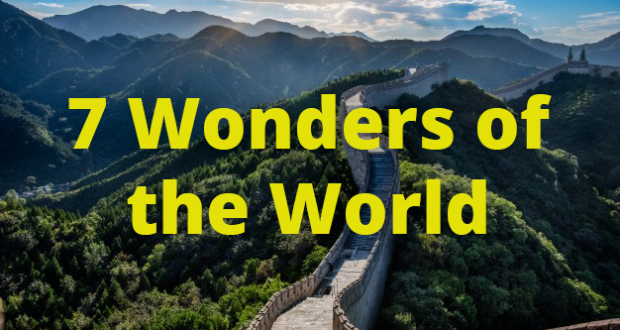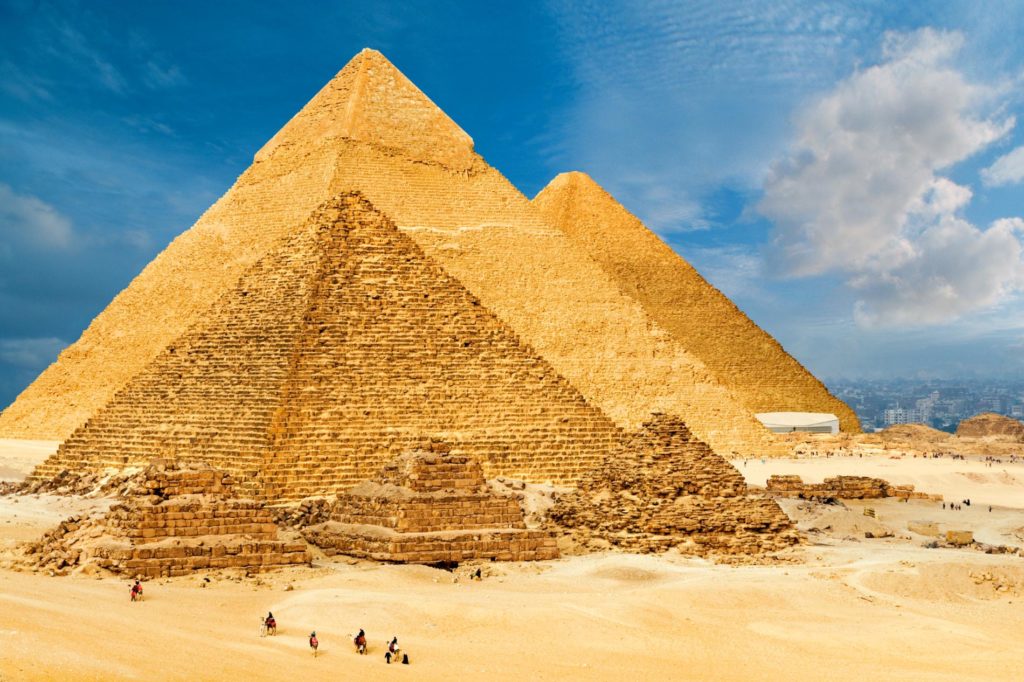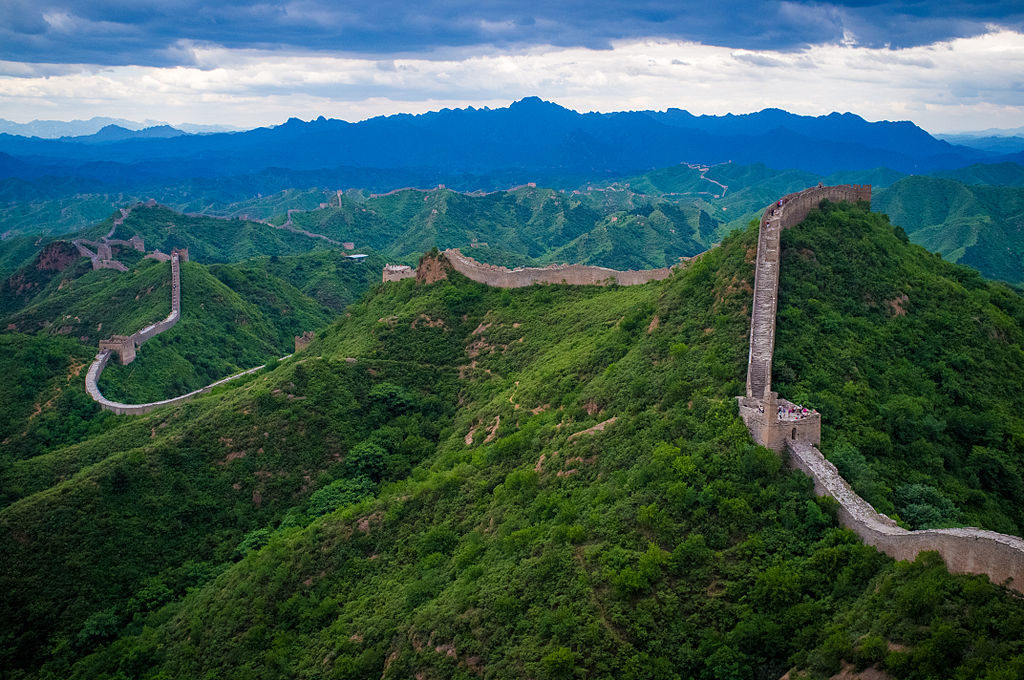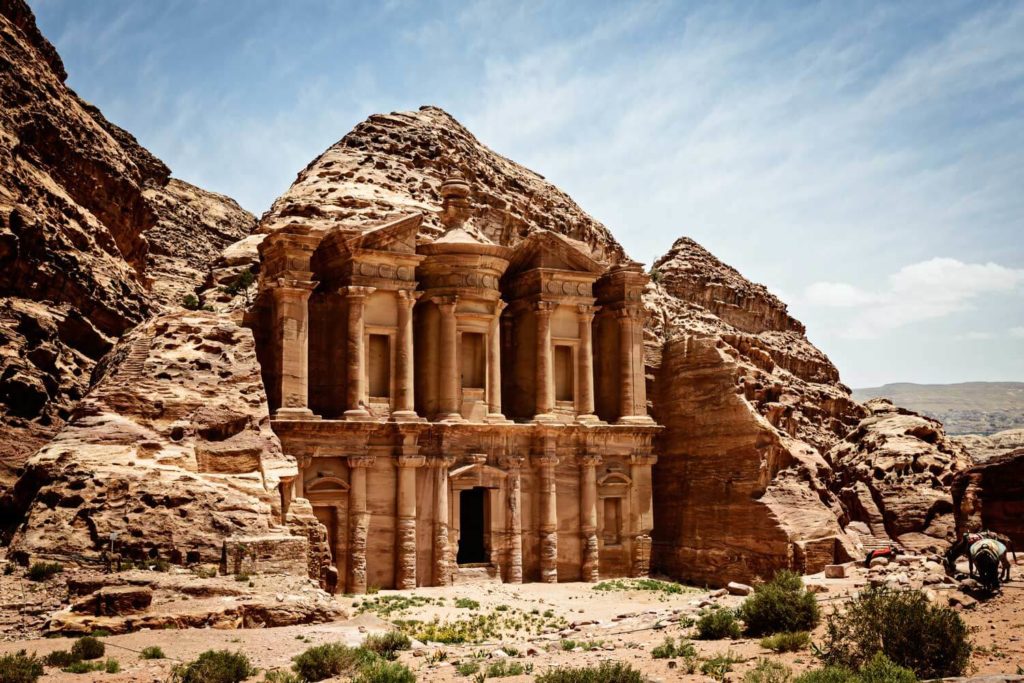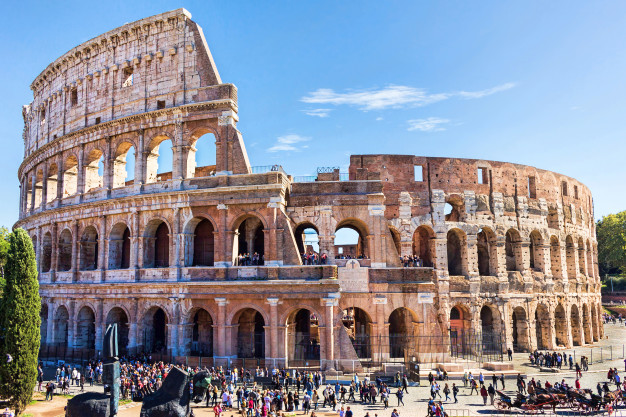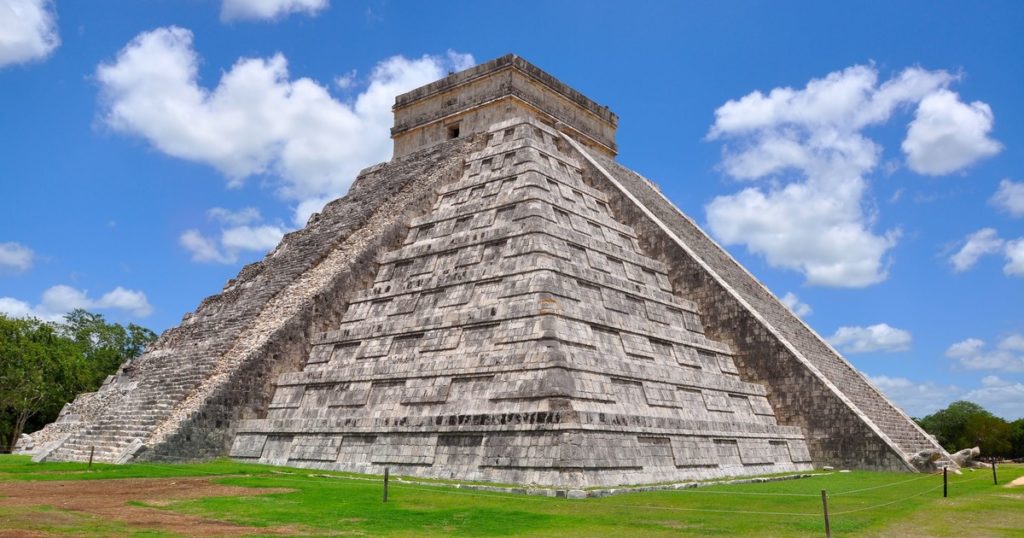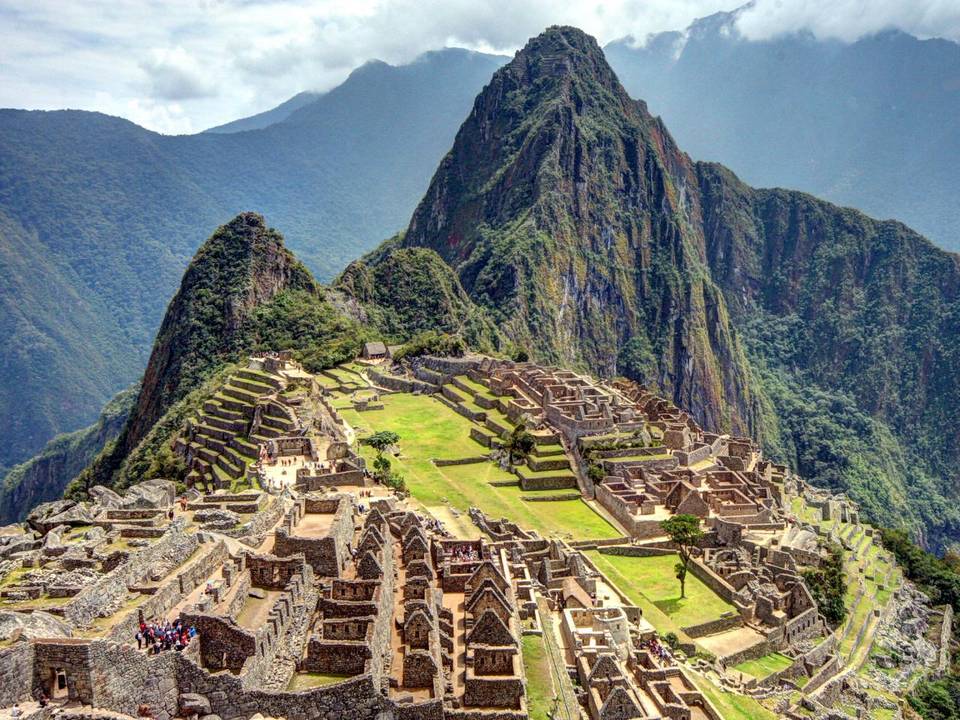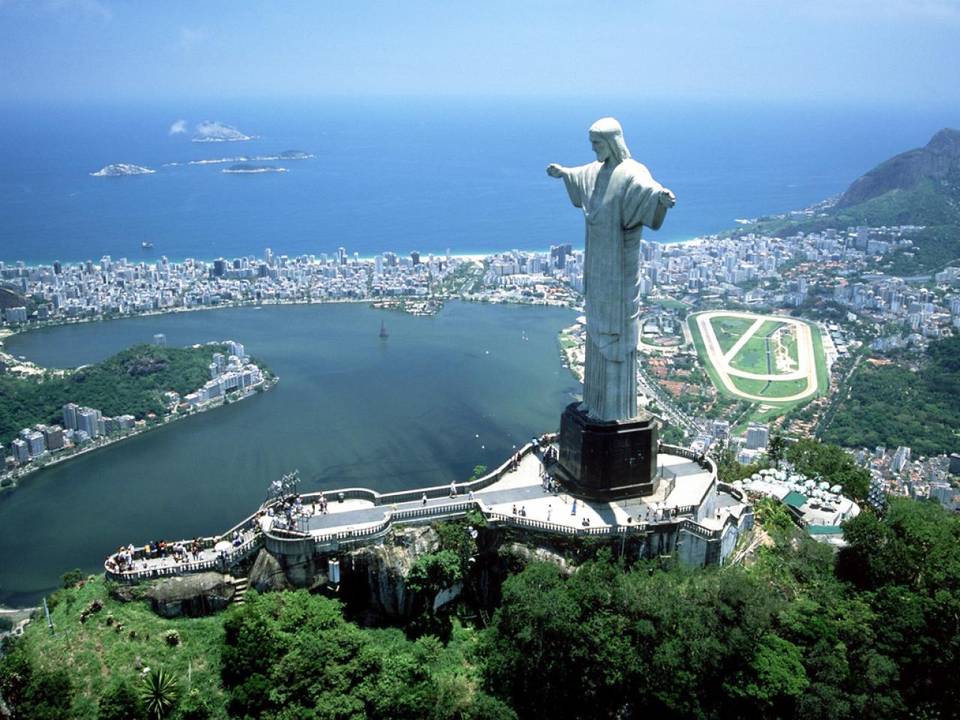More than 100 million people voted to declare the New Seven Wonders of the World. The following list of the New Seven Wonders is presented without ranking and aims to represent global heritage.
Great Pyramid of Giza
All three of Giza’s famed pyramids and their elaborate burial complexes were built during a frenetic period of construction, from roughly 2550 to 2490 B.C. The pyramids were built by Pharaohs Khufu (tallest), Khafre (background), and Menkaure (front).
Great Wall of China (China)
Built between the fifth century B.C. what’s more, the sixteenth century, the Great Wall of China is a stone-and-earth stronghold made to secure the fringes of the Chinese Empire from attacking Mongols. The Great Wall is really a progression of various dividers spreading over around 4,000 miles, making it the world’s longest artificial structure.
Petra
More than 800 monuments and 500 tombs ‘hidden’ across 240 square kilometres: Petra is much more than the iconic Treasury façade. We suggest five routes for you to discover ‘the pink city of the desert’.
The Roman Colosseum
Rome’s, if not Italy’s, most persisting symbol is without a doubt its Colosseum. Worked between A.D. 70 and 80 A.D., it was being used for exactly 500 years. The circular structure sat almost 50,000 onlookers, who accumulated to watch the gladiatorial occasions and additionally other open exhibitions, including fight reenactments, creature chases and executions.
Chichen Itza
The virtuoso and flexibility of Mayan culture can be found in the amazing vestiges of Chichen Itza. This amazing city, an exchanging community for fabric, slaves, nectar and salt, prospered from roughly 800 to 1200, and went about as the political and financial center point of the Mayan human advancement.
Machu Picchu
Machu Picchu, an Incan city of sparkling granite precariously perched between 2 towering Andean peaks, is thought by scholars to have been a sacred archaeological center for the nearby Incan capital of Cusco.
Taj Mahal
A mausoleum commissioned for the wife of Mughal Emperor Shah Jahan, the Taj Mahal was built between 1632 and 1648. Considered the most perfect specimen of Muslim art in India, the white marble structure actually represents a number of architectural styles, including Persian, Islamic, Turkish and Indian.
Christ the Redeemer Statue
The Art Deco-style Christ the Redeemer statue has been approaching over the Brazilians from upon Corcovado mountain in a remarkable condition of unceasing gift since 1931. The 130-foot strengthened cement and-soapstone statue was structured by Heitor da Silva Costa and cost roughly $250,000 to construct – a great part of the cash was raised through gifts. The statue has turned into an effectively perceived symbol for Rio and Brazil.
Courtesy:
nationalgeographic.com
commons.wikimedia.org
passenger6a.in
sola.ai
holliddays.co
getyourguide.com
tajmahal.gov.in
daydreamtourist.com
 TRAVEL PLACES 24X7 Plan your Holidays and Vacation any time
TRAVEL PLACES 24X7 Plan your Holidays and Vacation any time
